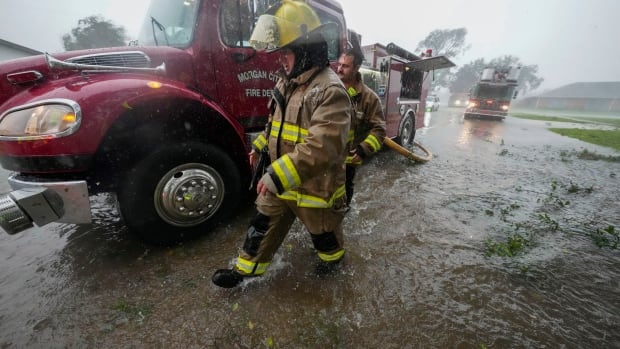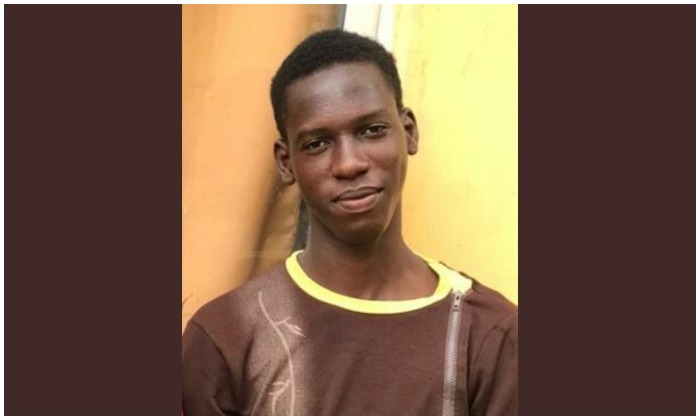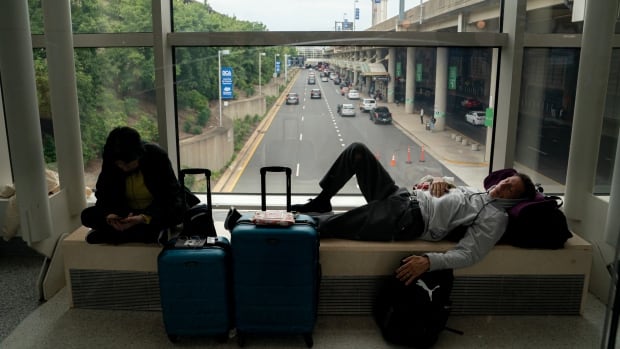Hello, royal watchers. This is your regular dose of royal news and analysis. Reading this online? Sign up here to get this delivered to your inbox.
When King Charles greeted members of the public on Easter Sunday, the handshakes and smiles were more than friendly greetings for a monarch making his first significant public outing since word spread of his cancer diagnosis in early February.
Charles has continued official duties, such as reviewing the state papers delivered to him in his red boxes, along with meeting politicians and ambassadors inside Buckingham Palace. There have been photos and video released of him looking at get-well cards.
But Sunday’s appearance outside St. George’s Chapel at Windsor Castle held a particular significance.
“I think there’s some intended subliminal messaging that is going out with all of this, to be giving people confidence in the monarchy and the stability of the monarchy as an institution,” said Justin Vovk, a royal commentator and a PhD candidate at McMaster University in Hamilton who specializes in the history of the monarchy, in an interview.
There have been, Vovk suggested, a lot of questions about the monarchy’s ability to weather this crisis.
“So I think his interactions with people at Easter and just his appearances in general are really meant to reinforce … for lack of a better term, the vibrancy of the King at the moment.”
King Charles and his wife, Queen Camilla, shook hands and exchanged greetings with members of the public who had lined up outside Windsor Castle on Sunday. The Easter service at St. George’s Chapel was the King’s first public royal event since Buckingham Palace announced his cancer diagnosis in early February.
That Charles would want to attend the Easter service comes as no surprise — both because of the occasion and his apparent desire to be doing more than he has been able to for the past few weeks.
“It was clear that he very much wants to show himself being out and about, and the Easter Sunday service was an ideal moment to do that,” said Craig Prescott, a constitutional expert and lecturer in law at Royal Holloway, University of London, in an interview.
“It reflects how Easter is an important moment for the Royal Family. The King is head of the Church of England and … it ticks many boxes.”
Perhaps, in an unexpected way, the past few weeks have made elements of Charles’s role more obvious to the public.
“It has … counterintuitively … made some of the constitutional functions which take place behind closed doors more visible,” Prescott said.

There has been video released of Charles meeting the chancellor of the exchequer — the British equivalent of Canada’s federal finance minister — something Prescott says isn’t ordinarily the case.
“Similarly, we’ve had video of him with the prime minister.”
That’s not unheard of, and certainly something that would happen when the monarch meets a new prime minister officially for the first time.
“But just having those clips is new in a way and … shows that they’ve been taking that approach of showing the King doing what he can do very seriously,” Prescott said.
In addition to Charles’s cancer diagnosis, Catherine, Princess of Wales is also undergoing treatment, after announcing two weeks ago that cancer had been found following her abdominal surgery in January.
With so much focus on the health of two members of the Royal Family, Vovk said it is a little difficult to assess just how Charles is getting along carrying out his role as King.
“Most of the media coverage is about the state of health, but it seems like he’s continuing with his mantra of keeping the institution stable, keeping it steady, not shaking it up from his mother’s reign.”
When Charles will next be seen in public, and the extent to which he returns to public duties, will continue to be highly scrutinized.
One regular high-profile event on the royal calendar — the state opening of the British Parliament — seems unlikely this spring. Planning for an official visit to Canada in May was put on hold, but media reports suggest planning is continuing for a possible visit to Australia in the fall.
But the royal calendar is also moving toward a busier time of year.
“I suppose that the big question is Trooping the Colour in June,” said Prescott.
That recognition of the monarch’s official birthday — on June 15 this year — includes a procession, sometimes with the monarch on horseback, and there has been speculation around how Charles might attend.
Overall, Vovk sees messaging coming out of Buckingham Palace right now that “the monarchy is not in peril.”
Plans for King Charles III’s first tour of Canada as head of state are on hold following his cancer diagnosis, CBC News has learned. Although the visit was never confirmed officially by Buckingham Palace, Canadian government sources told CBC News that King Charles III and Queen Camilla were set to visit in May. Read more: www.cbc.ca/1.7112434
“The … frenzy around Kate’s ‘disappearance’ has certainly, I think, sent the message that the Royal Family needs to be seen right now. And I suspect that has also played into the [number] of appearances Charles has been making.”
Charles is, Vovk noted, not as popular as Catherine, and if he’s not seen as much in public, there won’t be quite as much speculation.
“But I suspect there’s an element here of … his people are telling him you need to be seen right now to quash rumours, to quash conspiracy theories.
“The Russians had issued that fake notice … that he had died. So visibility is really, really important for him and just for the Crown right now.”
Camilla’s ‘remarkable transformation’

It was a historic first, and a moment that would have seemed improbable 30 years ago.
Queen Camilla stood in for King Charles at the Maundy Thursday church service just before Easter, becoming the first consort to lead the occasion, which is steeped in royal history and significance.
It was just the latest moment in a royal evolution that has few — if any — precedents.
“If you wind back … to the mid-1990s and the idea that it would be Camilla who would be the leading royal as Queen doing all of this … it’s a remarkable transformation over that broad sweep, and it shows just how accepted she has been as Queen,” said Prescott.
Observers have been noting for several years now that Camilla has gradually gained more acceptance from a public that at one time held little warmth for her. Some saw her as a pariah before her marriage to Charles on April 9, 2005, given their ongoing relationship during his ultimately doomed marriage to Diana, Princess of Wales.
Key to the evolution for Camilla, Prescott suggests, is a broader lesson of the monarchy itself: being slow and steady over decades will have its own reward.

“If you’re slow and steady, then you know you can really establish yourself as a member of the Royal Family, and people get used to that over time,” said Prescott.
“It’s interesting as well — the nature of her work has been, I think, more interesting than people might have expected.”
Camilla has in particular focused on supporting victims of intimate partner violence. She has also put an emphasis on the importance she sees in reading and literature.
Vovk sees a variety of factors at play in Camilla’s evolution.
“There’s so many moving parts to this: the rise of social media, the ability for events to be broadcast with greater … immediacy … and the revelation after Diana’s death of behaviour [Diana] had undertaken that now has been looked upon as a degree … of media manipulation.”
None of that is to undermine what was done to Diana “in any way, but just that people realized it wasn’t quite as black and white as we previously thought,” Vovk said.

Vovk suggests a lot of the credit goes to Camilla herself, a hardworking person in whom he sees humility and who is acting now with grace and without complaint.
“She has never sought the spotlight for herself … she basically did whatever the Royal Family wanted her to do even before the wedding, and from the moment that she and Charles got married, she very rarely put a foot wrong.”
There was also increasingly obvious support from within the Royal Family, whether it came as Camilla rode in carriages with Queen Elizabeth or how, just months before her death, Elizabeth made it clear that she wished that Camilla would have the title of Queen Consort when the time came.
‘The Queen’s stamp of approval on her was huge,” said Vovk.
Camilla’s “pragmatism and practicality” have also served her well, Vovk said.

At the Maundy Thursday service at Worcester Cathedral, Camilla handed out ceremonial coins to 150 people.
“It is … one of those key occasions that you would expect the King to do, and it was in a sense surprising how natural it is to have the Queen do it instead,” said Prescott.
It shows, he suggested, that there is another dimension to the monarchy when there is both a King and a Queen — something that hasn’t been the case since 1952 — and “that when it comes to these ceremonial sort of moments like this, the Queen can step in.”
Another royal family makes its Instagram debut

It is not the most casual of social media accounts.
But Japan’s imperial family has made its Instagram debut, in a move seen as an attempt to shake off a reclusive image and connect with younger people.
No private or candid moments were among the 60 photos and five videos that focused on public appearances made by Emperor Naruhito and Empress Masako so far this year.
Nor does the account follow anyone or interact with the public, although users can press the “like” button.
Still, it is a notable move for the world’s oldest monarchy.
“It was a huge step,” said Vovk, who noted that the imperial family is reckoning with its own future prospects, particularly the scarcity of male heirs in an institution that has male-only succession laws.
“I think that this is a sign that they are looking to start to move a little bit into the public space. But I think this is all we’re going to see for a while. I think it’s going to happen glacially slow.”

The Japanese monarchy has been shrouded from the public for centuries.
“They’re enclosed in the Imperial Palace complex, away from the eyes of the public. The big stone walls keep the public out,” Vovk said.
“You don’t see photographers being able to snap photos of the family on the grounds, like at Buckingham Palace or Windsor or something. And there’s certainly no tours.”
There has also been a great demand within Japanese society since the Second World War for greater transparency and accountability from the imperial family, he said.
“So [the Instagram account] is, I think, a first step to try and maybe creak that door open ever so slightly of interaction with the public and relevancy.”
Other royal families have been on social media for a while. The British Royal Family, for example, joined X — formerly Twitter — in 2009, and has 13.3 million followers on its Instagram account.
Carolyn Harris, a royal commentator and historian, says the Royal Family has seen periods where its members’ health has attracted major attention. But the feverish social media hype around the Princess of Wales in recent weeks shows how a ‘vast cross-section’ of the public around the world is taking speculation to new heights.
But Vovk cautions against thinking there might be many lessons for the imperial family in how the Windsors handle social media.
“It’s like comparing apples to oranges, because it’s not just a matter of comparing one dynasty to the next. It’s a completely different culture and a completely different way that media and public consumption of social media happens in Japan versus how it happens in the United Kingdom,” he said.
“The lessons would be, you know, tread carefully, but don’t tread too slowly.”
Royally quotable
“It is, for me, a great sadness that I cannot be with you all today.”
— King Charles, in an audio message to the Maundy Thursday service. “This act of worship, here in Worcester Cathedral, reminds me of the pledge I made at the beginning of the coronation service — to follow Christ’s example ‘not to be served, but to serve.’ That I have always tried to do and continue to do, with my whole heart,” he said.
Royal reads
-
Security researchers believe a Russia-based disinformation group amplified and added to the frenzy of social media conspiracies about the health of Catherine, Princess of Wales. [BBC]
-
People looking for a chance to see inside palace or castle walls have a few more opportunities this summer, with new areas of Buckingham Palace and Balmoral Castle open to public tours. Tickets sold out in 24 hours for the tours at Balmoral, in the Scottish Highlands, and they came at a hefty price: 100 pounds ($171 Cdn), or 150 pounds ($257 Cdn) if you stay for afternoon tea. Visitors had previously only been able to visit Balmoral’s ballroom and grounds. At Buckingham Palace, its famous centre room, where the Royal Family gathers before appearances on the balcony, will open to the public for the first time as guided tours take visitors into the residence’s recently reserviced east wing. [BBC, ITV]
-
A full-time King Henry VIII impersonator recounts how he ended up playing the role, and why he loves the job. [The Guardian]
Sign up here to have The Royal Fascinator newsletter land in your inbox every other Friday.
I’m always happy to hear from you. Send your questions, ideas, comments, feedback and notes to royalfascinator@cbc.ca. Problems with the newsletter? Please let me know about any typos, errors or glitches.








